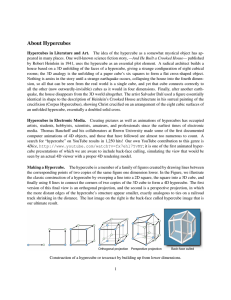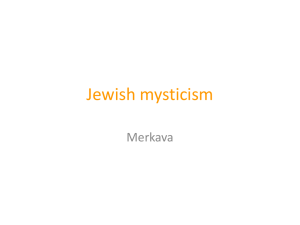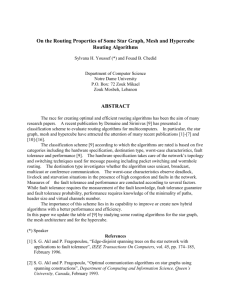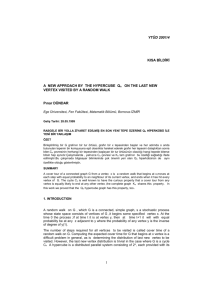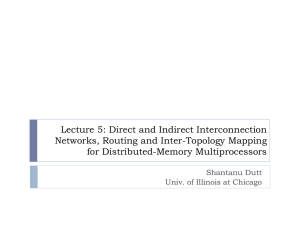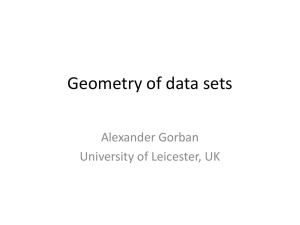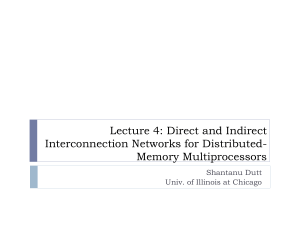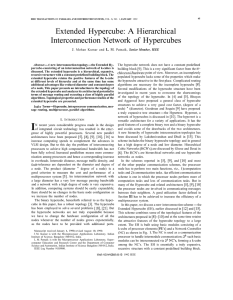Part 3 (pdf)
advertisement
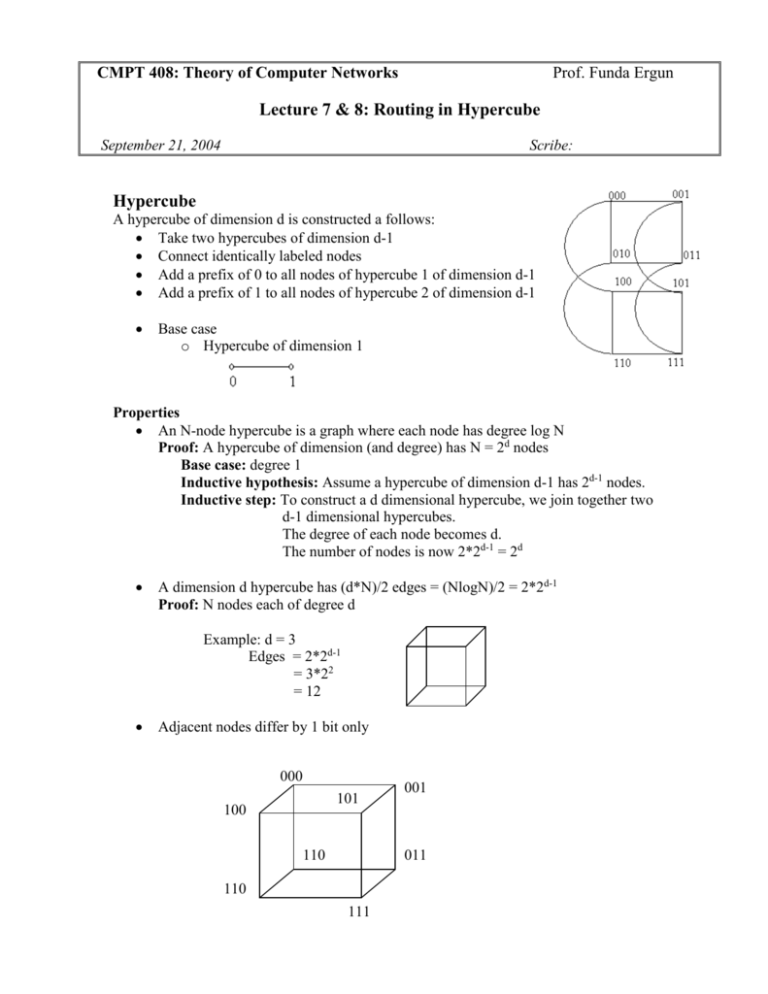
CMPT 408: Theory of Computer Networks Prof. Funda Ergun Lecture 7 & 8: Routing in Hypercube September 21, 2004 Scribe: Hypercube A hypercube of dimension d is constructed a follows: Take two hypercubes of dimension d-1 Connect identically labeled nodes Add a prefix of 0 to all nodes of hypercube 1 of dimension d-1 Add a prefix of 1 to all nodes of hypercube 2 of dimension d-1 Base case o Hypercube of dimension 1 Properties An N-node hypercube is a graph where each node has degree log N Proof: A hypercube of dimension (and degree) has N = 2d nodes Base case: degree 1 Inductive hypothesis: Assume a hypercube of dimension d-1 has 2d-1 nodes. Inductive step: To construct a d dimensional hypercube, we join together two d-1 dimensional hypercubes. The degree of each node becomes d. The number of nodes is now 2*2d-1 = 2d A dimension d hypercube has (d*N)/2 edges = (NlogN)/2 = 2*2d-1 Proof: N nodes each of degree d Example: d = 3 Edges = 2*2d-1 = 3*22 = 12 Adjacent nodes differ by 1 bit only 000 101 100 110 001 011 110 111 Routing: Oblivious routing, routing at each node. Oblivious: Algorithm (through path ) is determined at the source. Example: 010011 110101 -Use exclusive OR and route in the direction desired. 010011 110011 110111 110101 Algorithm: o Go from left to right on the source address. o If the current bit is not equal to the corresponding bit int the destination, change it. Property: o The length of a path from s (source) to t (destination) = # of bits that are different in s, t ( = # of 1’s in s XOR t) The diameter of the hypercube is d = log N of N nodes. Proof: The addresses have d bits. If they’re all different in s, t Hamilton Cycle Problem Go over each vertex without covering an edge or vertex twice. Comes back to the starting point. NP-hard: no one knows how to solve in 0(Nk) for any fixed k. Gray Code: Each time you increment, you flip one bit. Inductive Construction: 2 bit gray code: 00 01 11 10 3 bit gray code 010 011 001 000 Reversed 100 101 111 110 2 bit gray codes – reverse 1 First one gets prefix 0 Second one gets prefix 1 By induction, must prove that 000 100 and 010110 Theorem: If you follow the nodes corresponding to the gray code on the hypercube, you get a Hamiltonian cycle. Degree 3 Hypercube 000 011 0110 1000 0001 0101 0100 110 110 001 101 100 Degree 4 Hypercube 0000 0110 1110 Proof sketch: By induction, do identical Hamiltonian cycles on: - the 2 dimensional d-1 hypercubes - leave out the same edge - then the endpoints differ only in their leading bits. - By induction you can do this for any degree hypercube Star Topology Problem: Only one message can travel at a time Solution: Fast nodes. Tree Topology Problem 1: Big diameter Problem 2: Nodes need to share edges All node pairs have a unique path between them. Solution to the bandwidth problem: Fat Tree. 1011 1110 0111 111 1101 1100 0011 1001 1111 16 pairs 4 pairs High bandwidth Lower bandwidth Low bandwidth 1 pair Bandwidth increases exponentially higher up the tree. Routing: Permutation routing: 12345678 54387621 1 4 2 3 2,3 4 5 1 Issue: Max delivery time can be long if there is contention from a link. Theorem: On the hypercube there exists a permutation that delivery time is ≥ └ N/d ┘ for any deterministic algorithm. Randomized Routing: For any s-t pair: Pick an intermediate node v uniformly at random (can be done with d independent coin tosses, 1 for each bit of v). Phase 1: Route from s to v Phase 2: Route form v to t. Theorem: With high probability (1 – ε for small ε) the routing will take O(log N) steps for any randomized algorithm.
